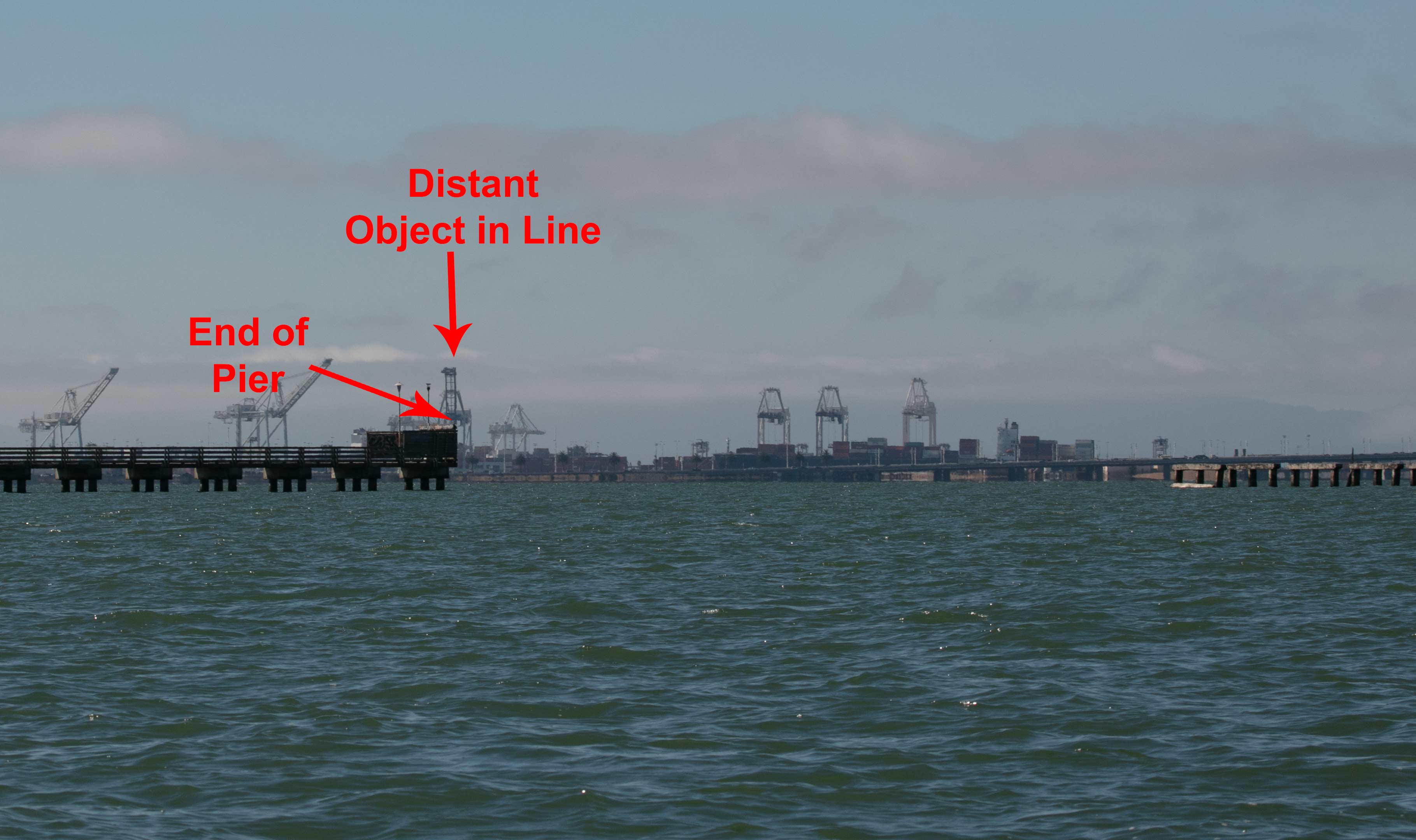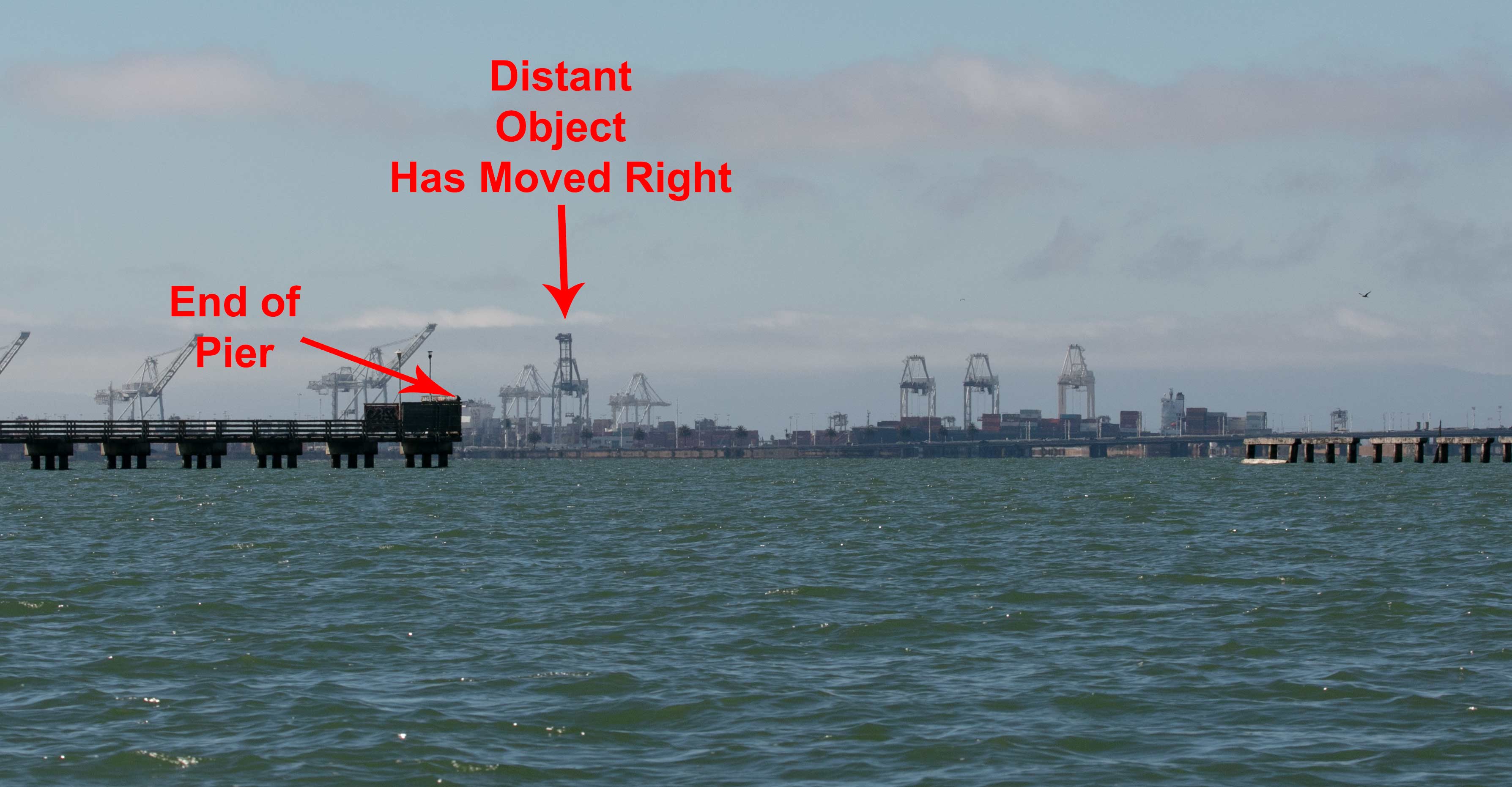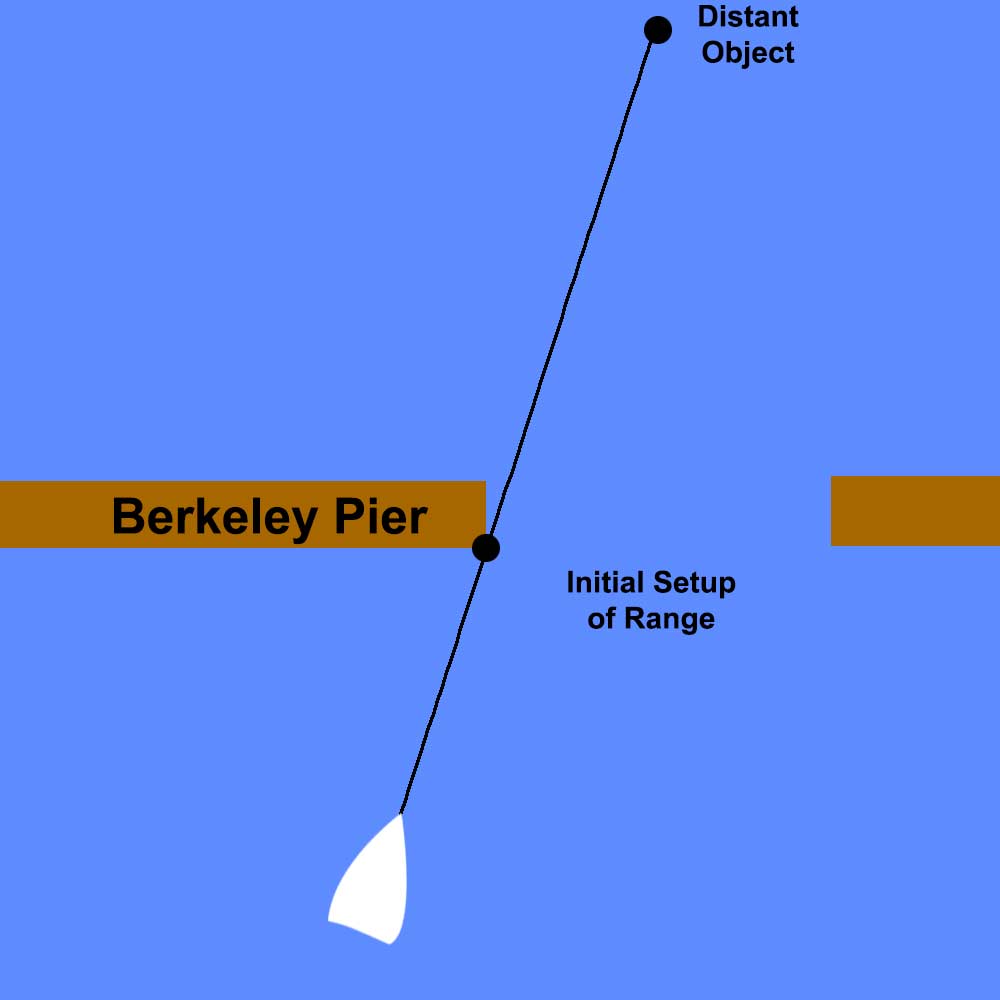Ranging - Part 2
What is Ranging?
Ranging is a simple technique useful in all types of boating to determine whether you are sailing a straight course over ground or are being pushed one way or another (by leeway or current). It is also useful to tell you whether your current course will allow you to clear an object (get through the gap in the Berkeley Pier, say). And more.
The basics are described in Part 1, which describes how to use it crossing a channel with current to maintain a straight course across.
The idea is that you pick a close object and one directly behind it farther away. As you go toward the close object, how the two objects line up tell you whether you are on a line passing through them, and if not, whether you are to the left or to the right of that line.
Another Use
Part 1 illustrates the principle, but it has much wider application than crossing a channel with current. For example, it can show you your course relative to an object.
Will You Clear the Gap in the Berkeley Pier?
Say you want to take your boat through the gap in the Berkeley Pier. You can use ranging to tell whether you'll make it on this tack. With a normal West or South West wind, you'll want to clear the east part of the gap (the west end of the first section of the pier). So pick that as your target and pick something in the distance directly behind it as the second object (in Richmond or in Oakland, depending on which way you are heading). The range will tell you whether you will clear the east part of the gap.
In this example we’re going south, and we’ve picked a crane behind the west end of the pier section as the distant object.

If the object in the distance is moving to the right as you get closer, Bob's your uncle, and you will clear it on your current course.

If it's moving to the left, you will not clear it, so you’ll have to head up or tack to do so. And f it's not moving, you're on a collision course for it.
Let’s look at this again from above. Here’s the initial setup of the range:

Here’s where you are if the distant object moves to the right:

And now if it moves to the left:

You can use this all the time
Coming from the north into the Berkeley Marina, are you going to make the middle entrance on this tack? Ranging will tell you. When I'm crewing, I've gotten into the habit of telling the skipper "I see good range on the Middle Entrance" or "I'm not seeing good range on it". With a good skipper, I'm telling them something they already know, but more eyes are always better.
The more you do it, the more natural it becomes. At first you will have to think about it a bit, but it will quickly become instinctive.
Ranging when Docking a Keelboat at J-Dock
Ranging is a very useful technique in the final approach to the dock. In a normal West or South West wind, you're slow sailing on a course you've selected based on the wind you saw earlier. But the wind can change and especially on a Commander you can get a lot of leeway if you lose speed. So you need to determine whether your actual final approach course will work, or whether you're being pushed too far sideways. So range on the end of the dock and some object, a mast or a tree, behind it.
Just like going through the gap, it will tell you whether your current course will take you where you want to go. In this case, what you’re worried about is leeway, but that doesn’t matter. This simple tool will tell you whether you’re going to make it.
I suggest making it a habit to range on your final approach course so you are always aware of your track. When you do it habitually, you'll naturally see when it's going wrong, you won't have to look for it, and you'll quickly go to your Bail-Out (remember that?). Things can change quickly near the dock, and you need to be prepared for that. A big part of that is knowing whether you are on your ideal course.
Up Next
We've seen how to use ranging to determine your course over ground relative to a destination or possibly an object you want to avoid. Next is how to use it to determine your position, like whether you’re in the Junior Area or in the Senior Dinghy Area.
When you subscribe to the blog, we will send you an e-mail when there are new updates on the site so you wouldn't miss them.



Comments